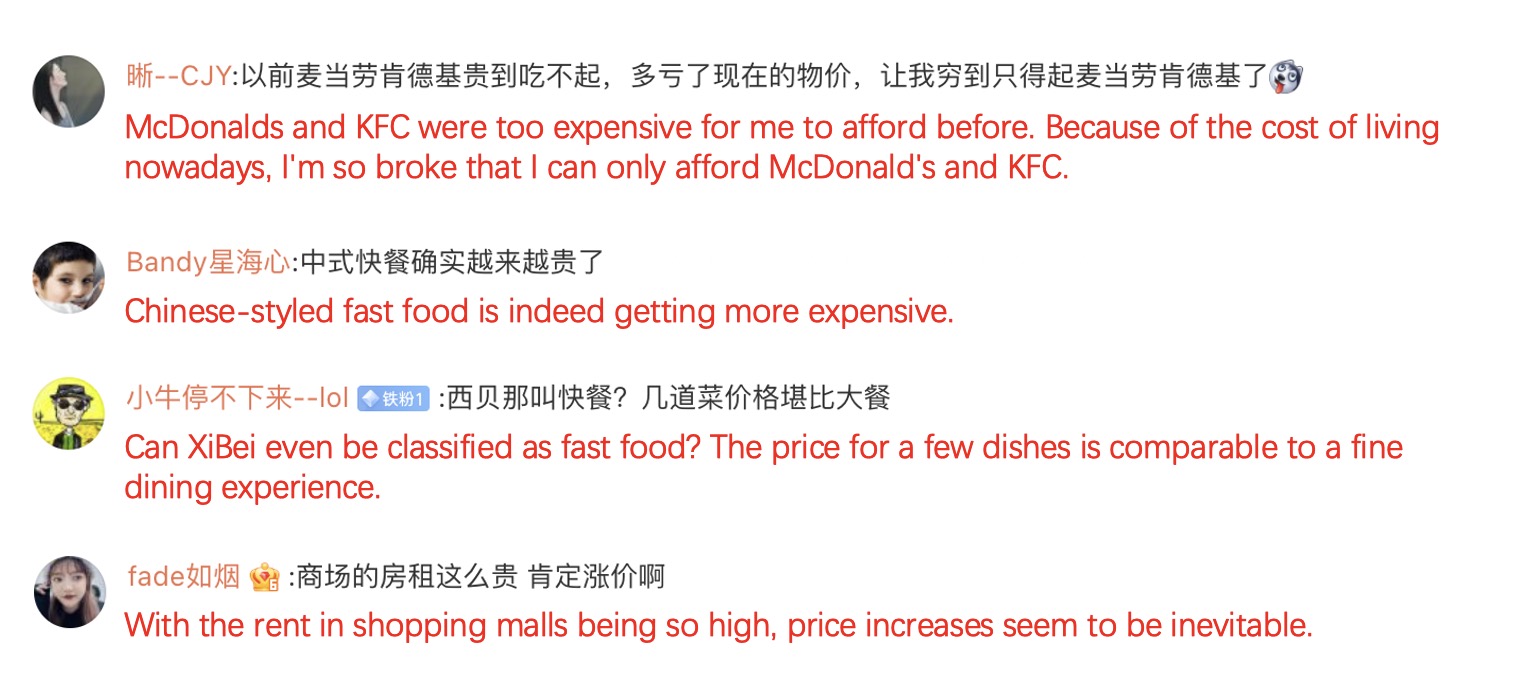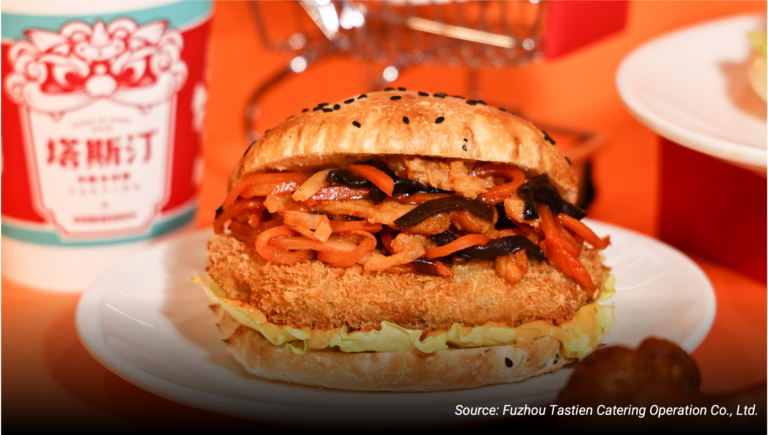Over the decades following the opening of the first KFC in Beijing’s Tiananmen Square in 1987, Western fast food was typically perceived as higher-end or even luxurious. This was attributed to its pricing and China’s economic conditions at that time. However, there has been a notable shift in the general perception of both Western and Chinese fast food in recent years. This transformation is primarily because of the emergence of numerous Chinese fast-food restaurant chains. This is in contrast to the widespread presence of Western fast food. Additionally, the rapid improvement in living standards, marked by a more than tenfold increase in income levels from 2000 to 2019, contributed to this changing dynamic as well.
Download our China’s F&B industry white paper

Factors contributing to the soaring prices of Chinese fast food
On Weibo, netizens are having a heated discussion over #why Chinese fast food is becoming less affordable as well# (为什么中式快餐也快吃不起了). In the 3rd week of November, it was viewed over 42 million times within four days. Once considered good value for money, Chinese fast-food restaurant chains are increasingly establishing a presence in high-tier shopping malls. This led to soaring prices caused by higher costs of rents, utility, human labor, and raw materials. In October, the hashtag #three steamed dumplings at XiBei for 29 yuan were criticized as too expensive# (西贝蒸饺3只29元被吐槽太贵) also gained traction on Weibo as well. According to a poll, a staggering 90.6% of the respondents found them too expensive. “McDonald’s and KFC were too expensive for me to afford before. Because of the cost of living nowadays, I’m so broke that I can only afford McDonald’s and KFC.” A netizen from Guangdong commented.

Key implications of the phenomena in the Chinese market
In response to the changing landscape of Chinese fast food affordability, businesses can strategically navigate these shifts by focusing on certain areas. Firstly, optimizing operational costs becomes imperative through the integration of technology, streamlining supply chain processes, and fine-tuning menu engineering. This involves identifying and rectifying inefficiencies to unlock potential cost savings. Secondly, diversification of offerings becomes a critical strategy, enabling businesses to cater to a broader customer base and meet evolving expectations. Enhancing kitchen workflows and ensuring efficient ingredient utilization further optimize internal processes, creating a balance between customer satisfaction and operational efficiency. In essence, adapting to the evolving market dynamics necessitates a holistic approach that combines operational efficiency and customer-centric strategies.
The evolution of Chinese fast food prices and consumer sentiments
- Over the years, Chinese attitudes toward fast food have shifted, with local chains altering the once-luxurious image of Western fast food, driven by increased income levels.
- Once considered cost-effective, the presence of Chinese fast-food chains in high-tier malls has led to rising prices due to increased costs of rent, utilities, labor, and raw materials.
- This shift is exemplified by criticisms of specific menu items being deemed too expensive, reflecting a broader sentiment among netizens.
- Balancing customer satisfaction and operational efficiency is essential for success in the evolving Chinese fast-food market.
Contact us for in-depth Chinese fast food market research in China
The Chinese fast food market is a rapidly growing sector, characterized by shifting tastes, digital advancements, and increased international interest. Daxue Consulting provides specialized market research in China, offering in-depth insights into the fast food market landscape and consumer preferences.
Our expertise helps businesses navigate market dynamics and identify opportunities for growth. Through our consulting services, we enable clients to make data-driven decisions and develop effective strategies for success. Contact us today to discover how our services can support your objectives in the evolving Chinese F&B market.






